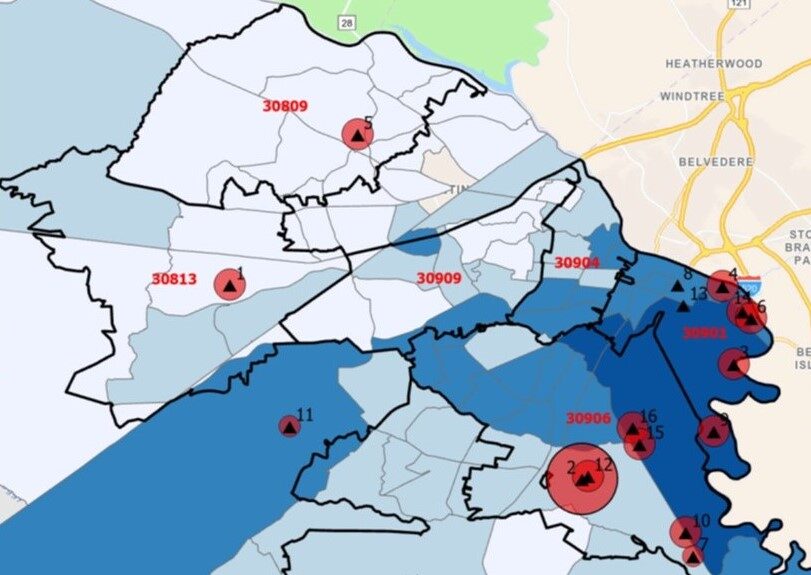Environmental justice data, while abundant, is often scattered across various federal, state, and local agencies, making access and interpretation difficult.

E2I2 provides data-driven insights to help communities tell their environmental justice stories.
We use tools like:
GIS mapping to display pollutants such as toxic air emissions from Toxics Release Inventory (TRI) facilities and greenhouse gas (GHG) emissions. Our mapping overlays environmental data with socio-demographic factors (e.g., racial group, poverty levels) to visualize the communities most impacted.
Climate and Economic Justice Screening Tool (CEJST) to describe environmental burdens.
EPA’s EJScreen to compare community data with national and state averages.

Ongoing Related Projects:
Recently Completed Projects:

We completed a report on the environmental and social conditions of Augusta, Georgia, including TRI and GHG mapping.



